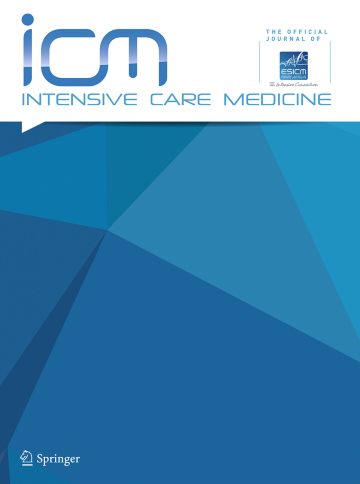Characteristics of ventilator weaning in patients intubated for Guillain-Barré syndrome or myasthenia gravis: a nationwide multicenter study.
IF 21.2
1区 医学
Q1 CRITICAL CARE MEDICINE
引用次数: 0
Abstract
PURPOSE Severe forms of Guillain-Barré syndrome (GBS) and myasthenia gravis (MG) may result in prolonged mechanical ventilation in ICUs. Data on weaning from mechanical ventilation are scarce, and our objective was to assess ventilator weaning characteristics in a large-scale multicenter study. METHODS Multicenter retrospective cohort study including all patients intubated for at least 48 h for GBS or MG over a 10-year period (from January 2014 to December 2023). The primary outcome was the proportion of patients having experienced prolonged weaning (at least 7 days). RESULTS Some 886 patients admitted to 47 ICUs in France were retained in the analysis, including 513 (58%) with GBS and 373 (42%) with MG. Patients with GBS were more likely to experience prolonged weaning than those with MG (64% vs. 35%, p < 0.001). An extubation attempt was performed in only 46% of patients with GBS and in 88% patients with MG (p < 0.001). Reintubation rates were 26% in patients with GBS and 29% in patients with MG (p = 0.440). Patients with GBS were more likely to undergo tracheostomy than those with MG (57% vs. 17%, p < 0.001). Patients with GBS required a longer duration of mechanical ventilation and ICU stay. Mortality rates were similar (9.4% for patients with GBS and 9.7% for patients with MG, p = 0.882). CONCLUSIONS Patients with GBS were more likely to experience prolonged weaning and to undergo tracheostomy than patients with MG. More than one-fourth of patients required reintubation after an extubation attempt. Despite prolonged duration of mechanical ventilation, mortality remained relatively low.吉兰-巴罗综合征或重症肌无力插管患者呼吸机脱机的特点:一项全国性多中心研究。
重症吉兰-巴勒综合征(GBS)和重症肌无力(MG)可导致icu患者延长机械通气时间。关于机械通气脱机的数据很少,我们的目的是在一项大规模的多中心研究中评估呼吸机脱机的特征。方法采用多中心回顾性队列研究,纳入10年(2014年1月至2023年12月)期间插管治疗GBS或MG至少48小时的所有患者。主要结局是经历过长时间断奶(至少7天)的患者比例。结果法国47个icu共纳入886例患者,其中513例(58%)为GBS, 373例(42%)为MG。GBS患者比MG患者更有可能经历较长时间的断奶(64% vs 35%, p < 0.001)。只有46%的GBS患者和88%的MG患者进行了拔管尝试(p < 0.001)。GBS患者的再插管率为26%,MG患者为29% (p = 0.440)。GBS患者比MG患者更容易接受气管切开术(57% vs. 17%, p < 0.001)。GBS患者需要更长的机械通气时间和ICU住院时间。死亡率相似(GBS患者为9.4%,MG患者为9.7%,p = 0.882)。结论GBS患者比MG患者更有可能经历长时间的脱机和气管切开术。超过四分之一的患者在拔管后需要重新插管。尽管延长了机械通气时间,但死亡率仍然相对较低。
本文章由计算机程序翻译,如有差异,请以英文原文为准。
求助全文
约1分钟内获得全文
求助全文
来源期刊

Intensive Care Medicine
医学-危重病医学
CiteScore
51.50
自引率
2.80%
发文量
326
审稿时长
1 months
期刊介绍:
Intensive Care Medicine is the premier publication platform fostering the communication and exchange of cutting-edge research and ideas within the field of intensive care medicine on a comprehensive scale. Catering to professionals involved in intensive medical care, including intensivists, medical specialists, nurses, and other healthcare professionals, ICM stands as the official journal of The European Society of Intensive Care Medicine. ICM is dedicated to advancing the understanding and practice of intensive care medicine among professionals in Europe and beyond. The journal provides a robust platform for disseminating current research findings and innovative ideas in intensive care medicine. Content published in Intensive Care Medicine encompasses a wide range, including review articles, original research papers, letters, reviews, debates, and more.
 求助内容:
求助内容: 应助结果提醒方式:
应助结果提醒方式:


